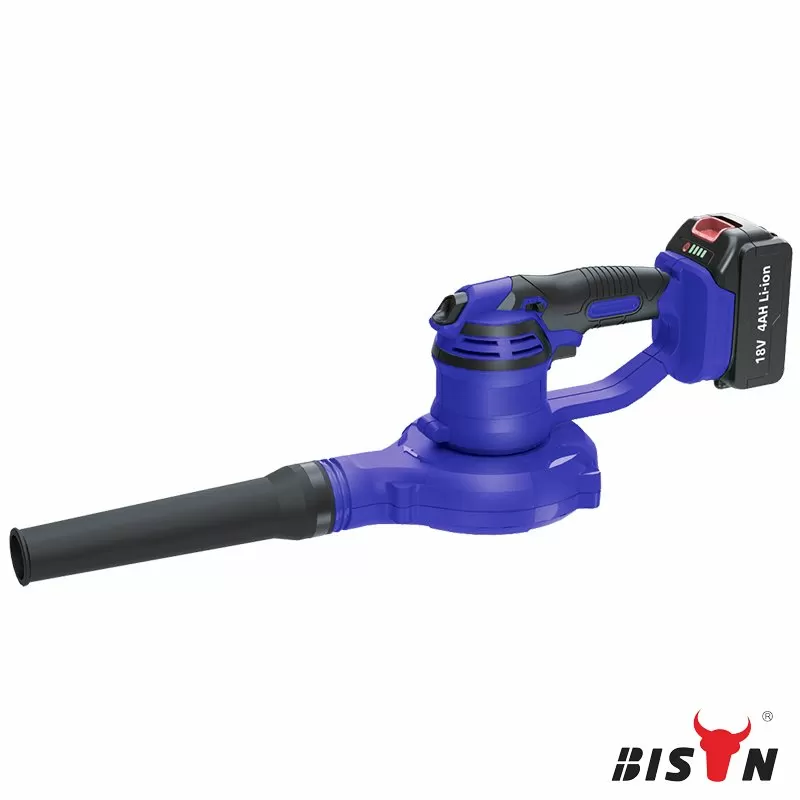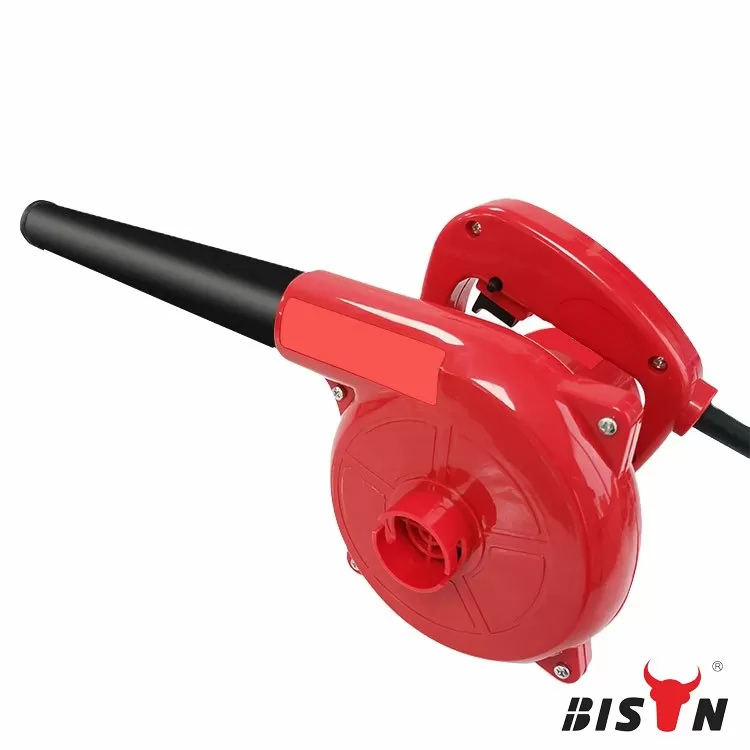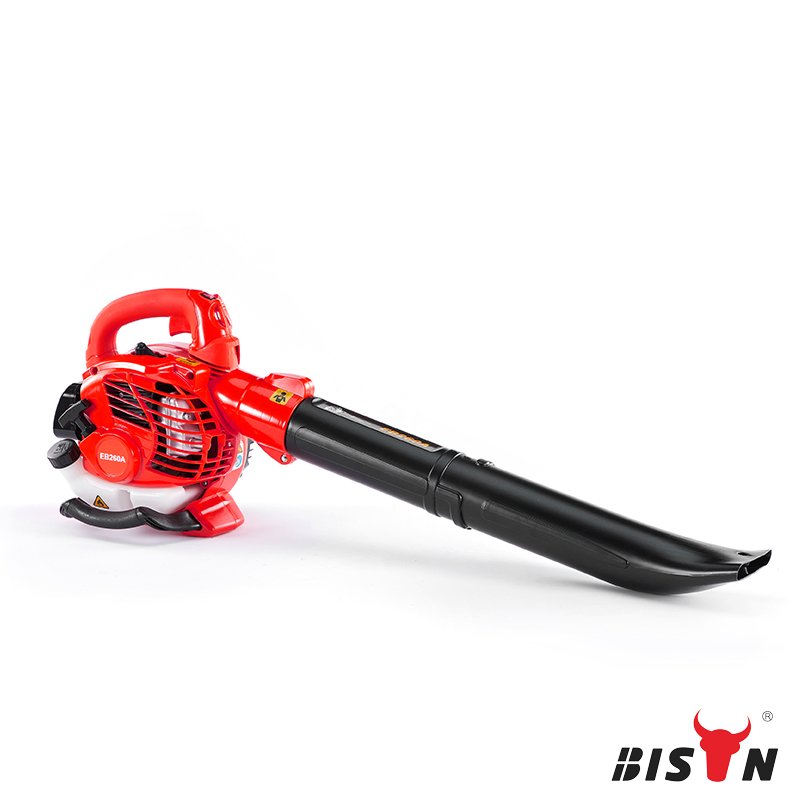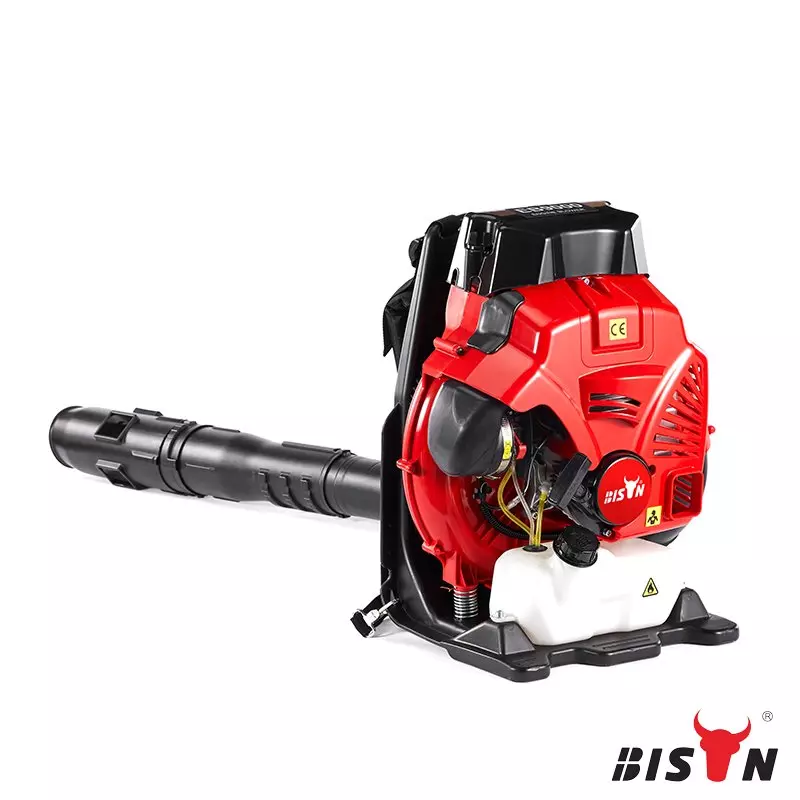how to use a leaf blower
2023-10-06
Table of content
Whether you need to clear sidewalks after mowing or collect fallen leaves, a leaf blower is an efficient tool to get the job done quickly. These machines come in all shapes and sizes to meet homeowners’ needs. Thanks to innovations, leaf blower models are getting quieter, which can go a long way in winning over your neighbours. To maximize its benefits, understanding its operation is crucial. BISON lays out an easy-to-follow process about using leaf blowers, ensuring you wield your leaf blower with confidence and efficiency.
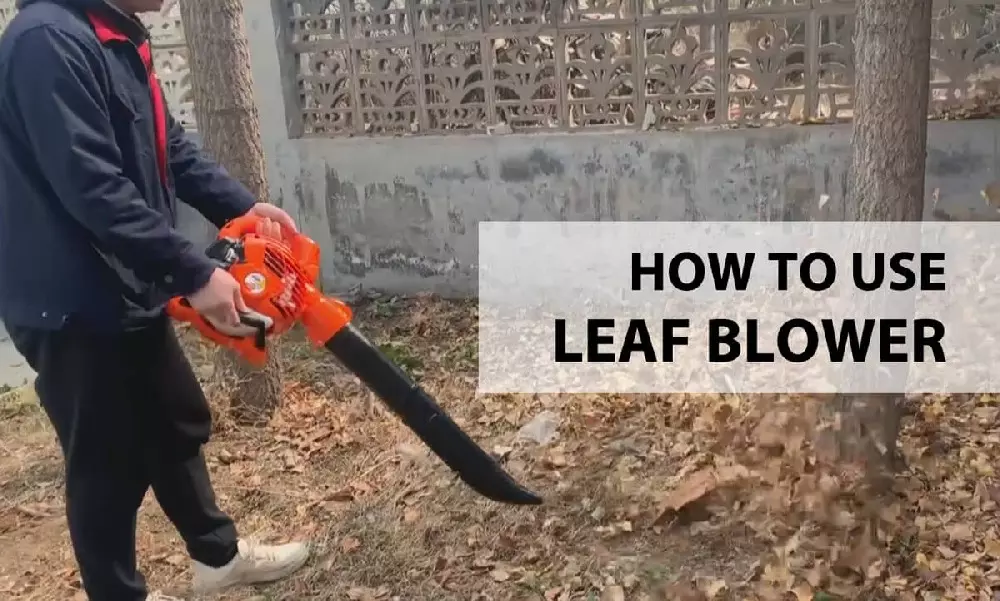
Leaf blower safety tips
Safety gear is highly recommended when using a leaf blower. Safety goggles or glasses, gloves and ear protection are helpful for users of both gas-powered and electric ones. Additionally, pants, long-sleeved shirts, and closed-toed shoes will help protect you from flying debris.
At the same time, be aware of your surroundings and avoid blowing debris towards people, pets, or property. Do not use a leaf blower in wet or windy conditions. Do not operate while standing on ladders, roofs, trees or other unstable surfaces. Don't use a leaf blower if you are sick or tired, if you are taking medication, or if you are using drugs or alcohol.
How to use the leaf blower correctly?
Using a leaf blower properly takes some skill. For best results, this task should be done in calm, dry weather when leaves, dust, and other debris can easily be blown in one direction. Follow these six steps to use your leaf blower:
Step 1: Identify leaf traps
Before starting the leaf blower, take a few minutes to walk around the area you will be working in and identify where most of the leaves will naturally gather. These “leaf traps” may include storm drains and around shrubs or tall ornamental grasses.
Step 2: Fuel up
For gas-powered leaf blowers, fill it up with the right blend of fuel and oil. Follow the manufacturer's specifications to ensure optimal performance and longevity of the machine.
Step 3: Ignite the power
Determine a spot around your yard to blow leaves. Stand there initiate your leaf blower and grant it a few moments to warm up. This step is vital for the machine to reach its peak performance.
Step 4: Assume control
Hold the leaf blower beside your body, with the nozzle angled towards the ground. This stance offers maximum control and efficiency. Use bursts of air to move foliage and a “full throttle” approach for resistance.
Step 5: Command the Leaves
Point the blower at the ground directly in front of you, then swing the blower back and forth in a “U” shape, collecting leaves as you move across the yard. Direct them towards a central point for easier collection afterwards. If you are blowing leaves towards a fence or other area, be careful not to blow them up into the air, as this can create a dust cloud.
Step 6: Cool down
After finishing cleaning, turn off your leaf blower and allow it to cool down before storage. This practice ensures safety and prolongs the lifespan of your equipment.
Tips and tricks
Gather the leaves into small piles
Don’t even try to blow off all the leaves at once. You’re just moving piles of stuff from one side of the garden to another, which is not what you want!
As you move toward the center of your yard, gather leaves in small piles rather than large ones, which will be more challenging to clean up. And can smother grass or other plants if left for more than a few days at a time.
Divide and conquer
If you have a larger garden, it might be a good idea to have a leaf-blowing plan. Try dividing your garden into smaller, more manageable sections.
Blow leaves and debris into a small pile starting at one edge of the garden. Make sure you also target hard-to-reach areas (such as shrubs, bushes, and trees).
Adjust leaf blower speed
Blowing leaves off a gravel path is different from blowing leaves off grass. Be careful while using the leaf blower on harder surfaces, as debris may spoil the otherwise perfect look of your garden!
Most of the time, going faster than the recommended speed will do more harm than good to your garden: rocks and dirt fly everywhere, the grass is destroyed, and tears of dread ensue. Speed is fine, but make sure to slow down if necessary.
Other points
Try blowing them onto old sheets or tarps to make transporting them to the garden bin or compost pile easier later.
If you are blowing leaves towards a street or driveway, be sure to block off the area with traffic cones or other warning signs.
If you are blowing leaves in a windy area, try to work with the wind instead of against it.
Be careful not to blow leaves and debris into storm drains, as this can clog them and cause flooding.
In conclusion
In conclusion, the multitude of benefits associated with leaf blowers cannot be overstated. Their ability to reach inconvenient spaces and gather more leaves than a rake is a testament to their efficiency.
Leaf blowers are not just for leaves. They can be used in innovative ways, such as gutter cleaning, and offer significant power and portability advantages, especially those powered by gas.
However, only the most powerful leaf blowers are suitable for this type of task. If you are looking to purchase leaf blowers in bulk, BISON offers an extensive range of models to meet diverse needs. Whether you prefer gas or battery-powered, require specific features, or have a set budget, we are committed to providing solutions tailored to your requirements.
Contact us today to explore the benefits of leaf blowers and discover how they can revolutionize your yard maintenance routine.
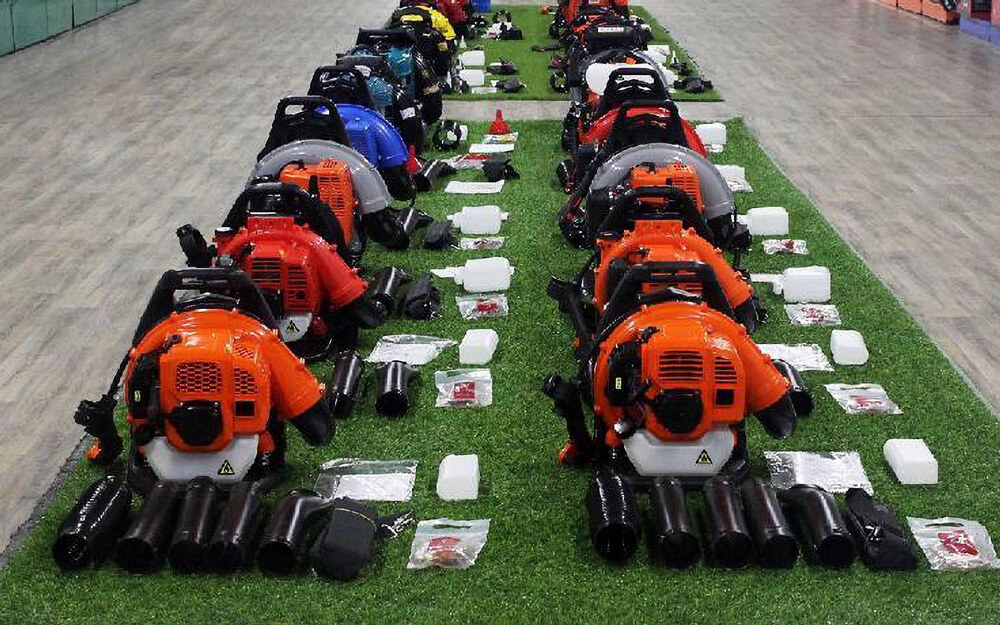
People also ask about using a leaf blower
What to do with leaf piles?
Once the leaves are piled together, you have several options for removal.
a) Mulch: The leaves provide an excellent source of nutrition, habitat, and weed suppression and can be sprinkled around garden beds in late fall. The 4-5 inch layer of leaves degrades into the soil within a season in most areas with plenty of rain and snow.
b) Compost: Another option for collecting leaves is to compost them. Like mulch, fallen leaves make excellent compost, which can later be used to improve garden soil.
c) Fall decorating fillers: Instead of bagging and handling, leaves can also be used as fall decorating fillers. Halloween leaf bags come in various sizes and designs, making them perfect for most yards.
d) Disposal: If none of the previous methods works, it’s essential to dispose of the leaves properly! Be sure to contact your council or municipal waste hauler to find the best way to dispose of the leaves.
When should you start blowing leaves?
Between 9 am and 8 pm is a good time to follow. Please make sure the leaves are dry. Wet leaves are heavy and will stick to the ground while using a leaf blower. Wait for a dry day before using the leaf blower.
What is the best technique for a leaf blower?
The tip of the leaf blower should always be pointing down. This way, the air is concentrated in a smaller area, giving you more blowing control and precision. Small angles make the leaves move forward instead of up. Keeping the leaf blower close to the ground will prevent dust from blowing upwards.
How to reduce dust?
First, place the nozzle close to the ground, then raise it to a height that will not create dust. Use the full lower nozzle extension to control sound, minimize dust, and monitor what you’re moving. You might want to practice moving grass clippings or paper cups without moving dust.
How to operate courteously?
Be aware of your surroundings. Follow local rules and regulations on when to use a leaf blower. Please do not use it early in the morning or very late in the day. You need to check the wind direction and strength. Never point nozzles at or blow debris at people, pets or houses. Do not blow debris into open windows and doors. Always consider nearby people and property. Make sure you never leave the blower running unattended. Also, please do not use a blower to disperse or spray fertilizers, chemicals, or other toxic substances unless specifically designed for these purposes and located in an appropriate area.

